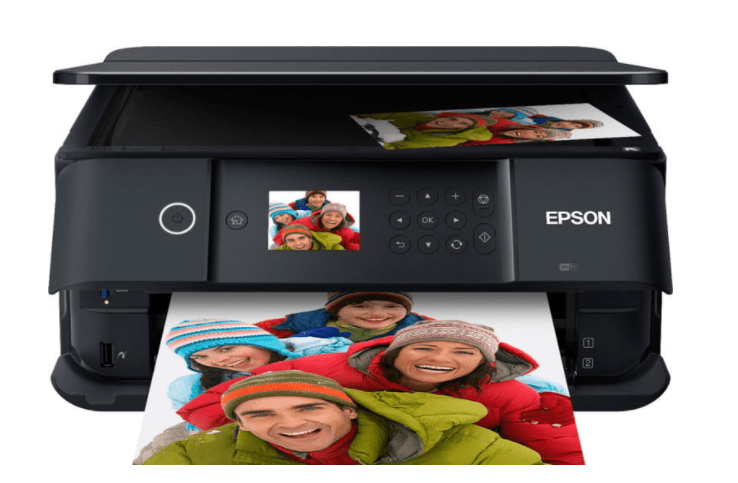DDR5 vs. DDR4 RAM: For years, DDR4 memory has been the primary type of best RAM used in several generations of PCs and laptops, but its successor is quickly catching up. DDR5 memory debuted on Intel’s Alder Lake processors and will be found in AMD Ryzen 7000-series processors, but the question remains: Is DDR5 memory worth the upgrade?
Here is how DDR5 and DDR4 compare so you can decide which type of memory is best for your next upgrade.

We tested both DDR4 and DDR5 on Intel’s 12th-generation i9-12900K, and DDR5 was 11% faster across all testing benchmarks.
The results were heavily influenced by the benchmarking software used. DDR5 was only 7% faster than DDR4 in a 3D Mark Time Spy test, but it blew DDR4 out of the water in both Geekbench 5 tests.
It’s worth noting that DDR5 gives Alder Lake an advantage, which means Intel’s 12th-generation chips perform best when paired with DDR5 RAM. We’ll be able to see how DDR5 affects the new AMD Ryzen 7000 processors once we get our hands on them. On multi-core performance, we are confident that the results will be similar, if not better.
You may also like Best RAM
DDR5 vs. DDR4 RAM Performance
Memory performance is determined by a variety of factors, but speed is the most important differentiator between different kits.
This is measured in Megatransfers per second, or MT/s, though it is frequently given in MHz. Because the effective performance number is the same in both cases, it can be used interchangeably.
DDR4 memory has a speed range that starts at 1,600MHz and goes up to 3,200MHz. However, manufacturers have been releasing DDDR4 memory kits that are far more capable than that, and they have also enabled far greater speeds through the use of extreme memory profile (XMP) automated overclocking. Kits rated for 4,000MHz are common, though kits capable of exceeding 5,000MHz have been reported. Because the real-world performance benefits of such memory aren’t immediately apparent, such kits are uncommon (and expensive), but they do exist.
DDR5, on the other hand, has its own set of specifications, beginning at 4,800MHz and increasing to 6,400MHz. However, as with DDR4, faster memory will be available in the future, and manufacturers have already begun announcing kits that exceed DDR5 standards. Adata unveiled a memory line capable of reaching 8,400MHz and another that may be capable of reaching 12,600MHz.
DDR5’s raw speed far outstrips even the fastest DDR4 at the top end, while the midrange hovers around 5,000MHz, which is comparable to the top end of DDR4 RAM.
The other side of the performance coin will be timing. They control the latency of specific memory functions and can have a significant impact on real-world memory performance. Although they are almost always looser on faster memory and will be on DDR5, they are unlikely to cause DDR5 to perform worse than DDR4.
DDR5 also improves memory channel architecture by using two smaller channels to handle memory access rather than a single larger one. The channel width remains the same, but two smaller channels may improve efficiency, giving DDR5 a performance advantage over its predecessors.
You may also like How to check RAM on Windows 11
Capacity
One of the most significant architectural differences between DDR5 and DDR4 is that the dies are twice as dense. When combined with new chip designs, this means that where DDR4 memory chips could be manufactured with capacities as high as 16GB, DDR5 chips can be manufactured with capacities as high as 64GB. This should result in higher-capacity memory sticks. While 128GB of memory in a single stick appears to be the most likely option, Samsung also offers a 512GB DDR5 stick.
There are very few mainstream applications for such memory capacities, but having the option for larger stick capacities makes longer-term upgrades easier to plan out and opens up the possibility of larger memory capacities on smaller systems as Mini-ITX builds. Do you want to know how much RAM you require? Take a look at our guide.
Power and thermals
DDR5, like previous generations of DDR memory, requires less power in exchange for improved performance. Whereas DDR4 requires 1.2v as a standard voltage, DDR5 requires only 1.1v. This helps to reduce power consumption in mobile devices such as laptops and tablets.
A lower voltage would normally imply that the electronics would run cooler, but this is not the case with DDR5. The voltage regulator for the memory in DDR5 kits is located on the modules themselves, rather than on the motherboard. DDR5 runs hotter than DDR4 due to the improved performance and much higher density of memory chips. This means that before installing DDR5 RAM, you should ensure that you have compatible heat sinks.
DDR5
DDR5 performance is more than double that of the fastest DDR4 modules. PCs are faster and more powerful than ever before when combined with Intel 12th-generation and upcoming 13th-generation processors or the new AMD Ryzen 7000-series processors. The recent drop in chip prices is a plus.
DDR5 has some heat performance issues, but it’s nothing that a well-cooled machine can’t handle. DDR4 is a well-known standard found in most computers built since 2015, and the top end will suffice. However, if you want to protect your computer in the future, you should upgrade to DDR5. DDR4 is quickly becoming obsolete as this is the new standard.
You may also like NVIDIA GeForce GTX: The Super Twin Fan Review
DDR5 vs. DDR4 RAM pricing and availability
DDR5 RAM pricing has dropped significantly since its introduction in 2021. You were looking at over $1,000 for 16GB back then. Most sell for around $6 per gigabyte nowadays, which means you can get 16GB of DDR5 RAM for less than $130. That is a significant price reduction.
However, if you want faster speeds and better timings when compared to the best DDR4 RAM, you’ll have to pay more. A decent 16GB kit in the 5600MHz range, for example, will cost you around $180. However, upgrading to 32GB of dual-channel DDR5 RAM at 5600MHz will cost you nearly $300. This is a reasonable price for top-tier memory.
DDR5 is already standard on Intel’s 12th-generation ‘Alder Lake’ processors, and we can now confirm AMD’s upcoming Ryzen 7000 Zen 4 CPU will only use DDR5 RAM. Robert Hallock, the company’s technical marketing director, stated that the company is “all-in on DDR5.”
Obtaining DDR5 RAM for your own custom build is now as simple as locating DDR4. Best Buy, Amazon, NewEgg, or your favorite electronics retailer will almost certainly have plenty to choose from.
CamRojud may earn a certain commission on products purchased via our links, which supports our effort on this content.
Would you like to read more about DDR5 vs. DDR4 RAM-related articles? If so, we invite you to take a look at our other tech topics before you leave!










